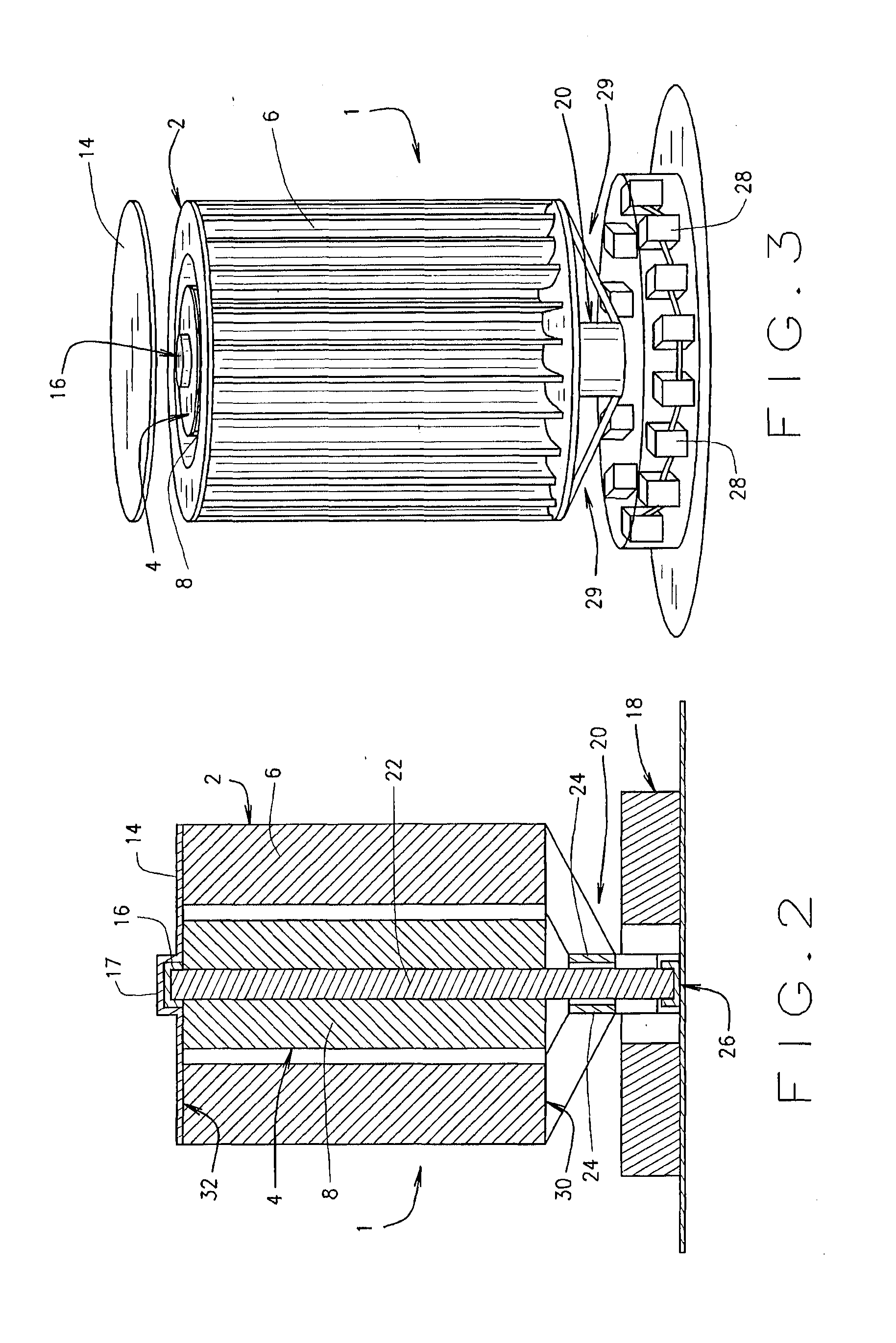Horizontal axis multiple stages wind turbine
a wind turbine and horizontal axis technology, applied in the direction of propulsive elements, engine fuction, propellers, etc., can solve the problems of increasing the power output range, hammering performance capabilities and power output range, and conventional wind turbines not producing the same amount of electricity all the time, so as to increase the rotational speed, reduce the impact, and improve the effect of strength and sturdiness
- Summary
- Abstract
- Description
- Claims
- Application Information
AI Technical Summary
Benefits of technology
Problems solved by technology
Method used
Image
Examples
Embodiment Construction
[0030]The present invention relates to a Horizontal Rotational design of Multiple
[0031]Stages Wind Turbine (“HMSWT”). This revolutionary concept and design uses the wind's natural kinetic energy to create a rotational movement which is in turn transformed into mechanical energy and generation of electrical power. It will be explained and understood that the transformation of this kinetic energy from the wind creating rotational movement and mechanical energy into electrical energy is achieved by means of power generating components and accessories such as: multiple turbine assemblies connected to independent shafts which are in turn connected to permanent magnetic alternators which create three phase AC power. This electrical power is then preferably rectified to DC or direct current in order to charge large power storage batteries or feed a grid-synchronous inverter.
[0032]In a preferred embodiment, the turbine blade assemblies may be connected directly to one or several alternators...
PUM
 Login to View More
Login to View More Abstract
Description
Claims
Application Information
 Login to View More
Login to View More - R&D
- Intellectual Property
- Life Sciences
- Materials
- Tech Scout
- Unparalleled Data Quality
- Higher Quality Content
- 60% Fewer Hallucinations
Browse by: Latest US Patents, China's latest patents, Technical Efficacy Thesaurus, Application Domain, Technology Topic, Popular Technical Reports.
© 2025 PatSnap. All rights reserved.Legal|Privacy policy|Modern Slavery Act Transparency Statement|Sitemap|About US| Contact US: help@patsnap.com



